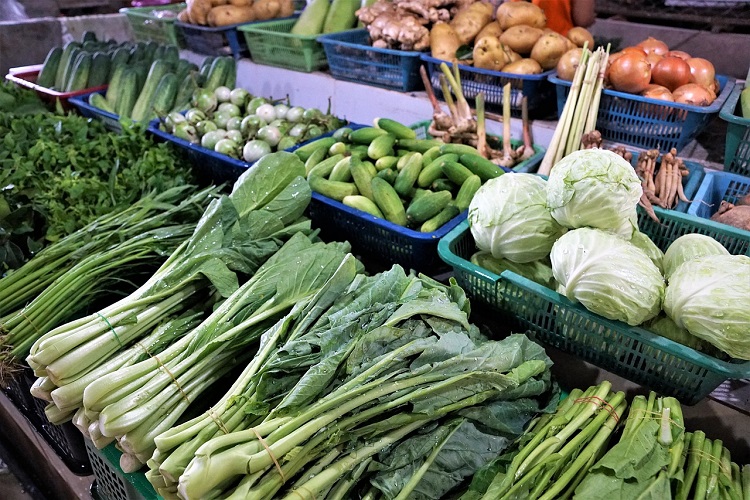Promises, promises, promises. The toxic world of genetically modified organisms (GMOs) and industrial agriculture is built on false promises. For nearly 30 years we have been listening to the propaganda of the big biotech companies like Monsanto/Bayer, Syngenta, DuPont/Pioneer, BASF and others about how genetic engineering will transform farming and food production.
We’ve heard how it will reduce the environmental impact of farming by lowering pesticide use. We’ve been promised that it will increase the nutritional content of food. We’ve been told how it will boost farmers’ profits by increasing yields, and that those increased yields will help “feed the world.”
As the problem of man-made climate change has moved to the top of the global agenda, new promises have emerged about how GMOs will fight climate change and how genetic engineering will make plants more resilient to drought and flooding. The huckster promises keep on coming, but what has the biotech industry actually delivered over nearly three decades?
Increasing Pesticide Use
First and foremost, GMO crops were sold as a way of reducing on-farm pesticide use. But since GM crops were introduced, there has been a dramatic increase in pesticide use on those crops worldwide.
Most GM crops fall into one of two types. Pesticide “resisters,” or “Roundup Ready” crops, mostly corn and soya, are genetically engineered to withstand the spraying of Monsanto’s Roundup herbicide, the active ingredient of which is glyphoqsate. Most recently, pesticide resisters have also been engineered to resist other highly toxic pesticides like dicamba and 2,4-D.
GM crops have turned glyphosate into one of the most widely and recklessly used herbicides in history. According to the USDA, more than 90% of the soybeans harvested on U.S. farms are genetically engineered to withstand herbicides like Roundup.
Pesticide “producers,” or Bt plants, which include corn and soya but also cotton, produce their own insecticides. When an agricultural pest eats the crop, in theory, it will be poisoned and die.
But weeds and insects rapidly evolve to be immune to these poisons. Most agricultural weeds have become resistant to Roundup, causing farmers to spray more each year. The heavier use of herbicides creates ever more “superweeds” and even higher herbicide use.
The increase was first seen in pesticide resisters. A 2012 study out of Washington State University found that planting GM crops quickly resulted in herbicide-resistant “superweeds” and, as a result, increased herbicide use.
By 2016, research from University of Virginia confirmed that glyphosate-resistant weeds have led to a 28% hike in herbicide use on GM soybeans compared with non-GM. This rise has also been reported in other countries such as Canada, Brazil and Argentina.
More recently, insects have begun to become resistant to the insecticides bred into pesticide products, causing farmers to use even more and more dangerous mixtures of pesticides to try and keep them under control.
Loss of Biodiversity
Right now, more than ever, we need a healthy, biodiverse and functioning ecosystem — one that depends on a rich diversity of plants, animals and insects.
Agricultural land that is biodiverse is more productive and more able to cope with unexpected changes, for instance, in climate or cyclical levels of plant diseases or invasive species. Studies show that healthy soil can absorb and hold more CO2 than damaged soil.
But today’s modern industrial farming involves often-large tracts of land devoted to a single crop, known as monocultures. In monocultures diversity is discouraged by the use of pesticides which keep every living thing, except the valuable crop, off the land.
In the U.S., land converted to soy production has typically been pre-existing agricultural land and so is not linked to deforestation, as it is in South America.
But, increasing demand for soy is destroying American prairies and analysis of satellite data has shown that between 2006 and 2011, farmers in the Dakotas, Minnesota, Iowa and Nebraska had converted 1.3 million acres of grassland into soybean and corn production. Research by the USDA’s Economic Research Service echoes this finding.
No Benefit to Farmers
These monocultures are bad news for wildlife, reducing habitats for a wide range of wild creatures, from ground-nesting birds to pollinators like bees and butterflies. They also are bad for farmers.
An in-depth investigation by The New York Times in 2016 revealed that, in addition to increasing pesticide use, genetic modification in the U.S. and Canada has failed to bring the expected increases in crop yields.
This resonates with the findings of a 2016 National Academy of Sciences report that found “there was little evidence” that the introduction of genetically modified crops in the United States had led to yield gains beyond those seen in conventional crops.
Most recently, U.S. farmers have been suffering from a glut of soy, linked to ongoing trade disputes with China, which have resulted in low prices and farm bankruptcies.
Equally important is the fact that GMOs have failed to feed the world. The main by-products of GMOs are fats and sugars. GMOs, when they’re not being turned into biofuels, are being turned into corn, soya and even cottonseed oil and sugars such as high-fructose corn syrup and beet sugar.
In other words, what GMOs have most successfully done is provide cheap, unhealthy ingredients for ultraprocessed “ready” meals, prepackaged foods and fast food restaurants.
A Poisoned Plate
All those monoculture crops and all that spraying, especially with glyphosate, have consequences for the food we eat. GMO crop monocultures lead to “monodiets.”
Today just a handful of crops now dominant diets around the world. This new monodiet has more calories and less nutrition. It’s a dietary disaster that is accelerating the worldwide rise in noncommunicable diseases such as obesity, heart disease and diabetes.

